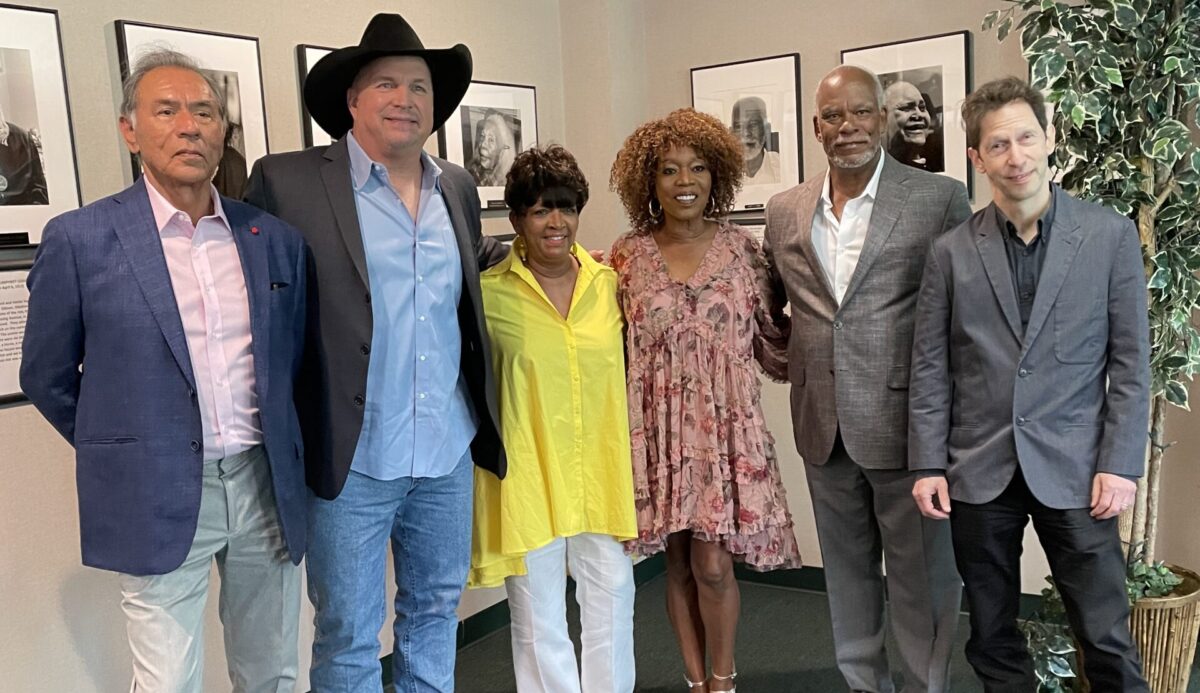
“Combating racism is closely tied to combating misinformation,” says Raymond Doswell, Ed.D., the executive director of Greenwood Rising Black Wall Street History Center in Tulsa. “Everyone must start with the truth about the past and the present, regarding how race matters penetrate our society.”
Oklahoma’s narrative and history as it relates to Black communities has been tumultuous from the onset. Due to the Indian Removal Act of 1830, the federal government forcibly relocated thousands of Native Americans from their homelands into Indian Territory, or the future Oklahoma. Several thousand African Americans were among those who endured the perilous journeys, many of them enslaved before and after arrival in Indian Territory.
Prior to and during the land rushes of the 19th century, Black people saw opportunities for land and entrepreneurial pursuits by forming all-Black towns. Today, at least 13 historically all-Black towns still exist in Oklahoma.
But with statehood, violence and bigotry against minorities continued and worsened in numerous ways. One of the worst occurrences among them, the 1921 Tulsa Race Massacre in the Greenwood District, is a dark stain on our history. However, numerous entities are bringing truth to light and educating the public.
“Work has been done as it relates to being diverse and inclusive; however, this journey is ever-evolving and ongoing,” says Frances Jordan-Rakestraw, the executive director of Tulsa’s Greenwood Cultural Center. “We must listen to one another and act with compassion. We are all different. We come from different places, backgrounds, families and identities. By working together to embrace and value our differences, we create a stronger and better community.”
Assets are readily available to help anyone learn about the history of Oklahoma and how to be a better, more tolerant global citizen.
“The ‘All-Black Town’ movement and other great history are captured at the Oklahoma Historical Society,” says Doswell. “The story of Black Wall Street and the 1921 massacre is documented at Greenwood Rising, and also at the Greenwood Cultural Center and the Tulsa City-County Library. Soon, the Clara Luper Center will open in Oklahoma City.”
Jordan-Rakestraw adds: “Organizations whose missions promote anti-racism and human relations include the Oklahoma Center for Community and Justice, the YWCA, the Tulsa Metropolitan Ministry and others. People should visit learning centers that teach about race and other diversity matters, such as Greenwood Rising and the Sherwin Miller Museum of Jewish Art. As well, Oklahomans should encourage inclusion of Black history in school curricula.”
A Look Back
Oklahoma history is overflowing with Black leaders who shaped and reshaped the state narrative. Prior to 1862, Wallace Willis, a Choctaw freedman living in Indian Territory, composed Oklahoma’s official gospel song “Swing Low, Sweet Chariot.” The historically important tune remains one of the most well-known Black spirituals and faith-based hymns.
Black soldiers of the First Kansas Colored Regiment, many of whom were from Indian Territory, were allegedly the first troops to see combat during the American Civil War.
The first Black politician to serve in the Oklahoma Territorial Legislature, Green Currin (1842-1918) authored Oklahoma’s first ever civil rights legislation; his many accomplishments included his role as a lawman, and serving as a regent for what is now Langston University.
In 1908, A.C. Hamlin (1881-1912) was the first Black politician elected to the Oklahoma State Legislature, and was the only Black person to serve in the legislature until the 1960s. Hamlin sponsored legislation that brought funding to create the Taft School for Black children who were deaf, blind and/or orphaned.
Hannah Diggs Atkins (1923-2010) was a librarian who taught law and library science at the University of Oklahoma. Elected to the Oklahoma House of Representatives in 1968, she served as the first Black woman in the legislature.
An educator, Clara Luper (1923-2011) was the first Black student admitted to the graduate history program at OU. Her innumerable accomplishments include her rise as a prominent and outspoken Civil Rights Movement leader. In December of 2019, the citizens of Oklahoma City voted to pass MAPS 4, which includes $25 million for the restoration of the Freedom Center building and the creation of the new Clara Luper Civil Rights Center.

Black Chambers Driving Success
With goals of inspiring, empowering and uniting, the Oklahoma City Black Chamber of Commerce (OKCBCC) stands for equal opportunities and equitable outcomes for business owners of all backgrounds. Members help advocate for equitability in business, and have access to numerous resources. OKCBCC helps members grow their networks by hosting events, offering opportunities and enabling business owners to connect with the community and each other.
In Tulsa, the Greenwood or Black Wall Street Chamber of Commerce supports and maintains 60 businesses on Greenwood Avenue.
“We are rebuilding Greenwood business by business,” says president Freeman Culver. “The Greenwood Chamber of Commerce is the number one economic chamber in the country for American people of color.”
Businesses on Greenwood Avenue run the gamut, from spas to wedding chapels, resource centers, incubators and accountants.
“We are working towards more engagement activities and attractions for members and non-members alike,” says Meghan Scott, the chamber’s marketing producer. “Over the past year, we have developed a radio station known as the Greenwood Beat that talks about everything community based. Within the same year, we rolled out The Original Black Wall Street Merchant Marketplace – a dynamic initiative that aims to empower and uplift small business owners and creatives within our community and beyond – just as the Historic Greenwood District had done triumphantly before the 1921 Massacre.”























